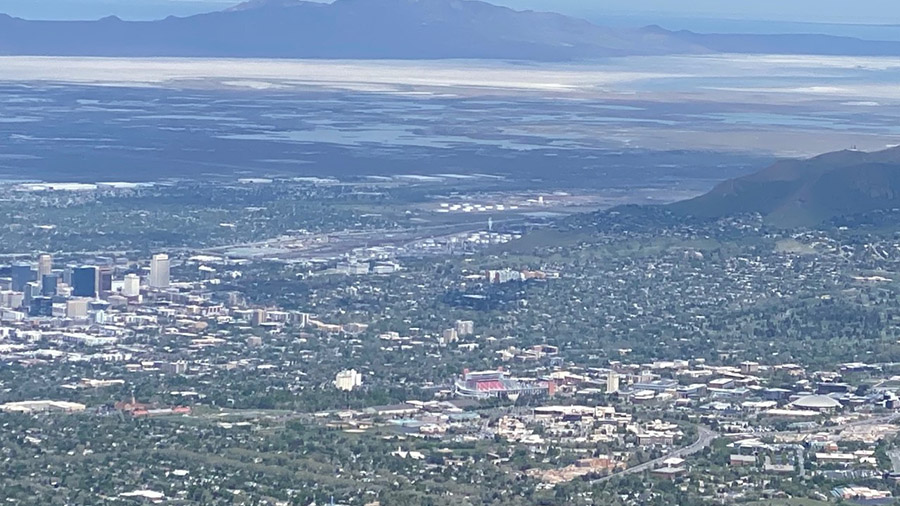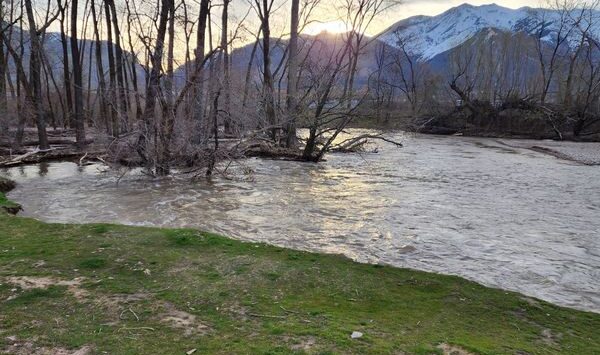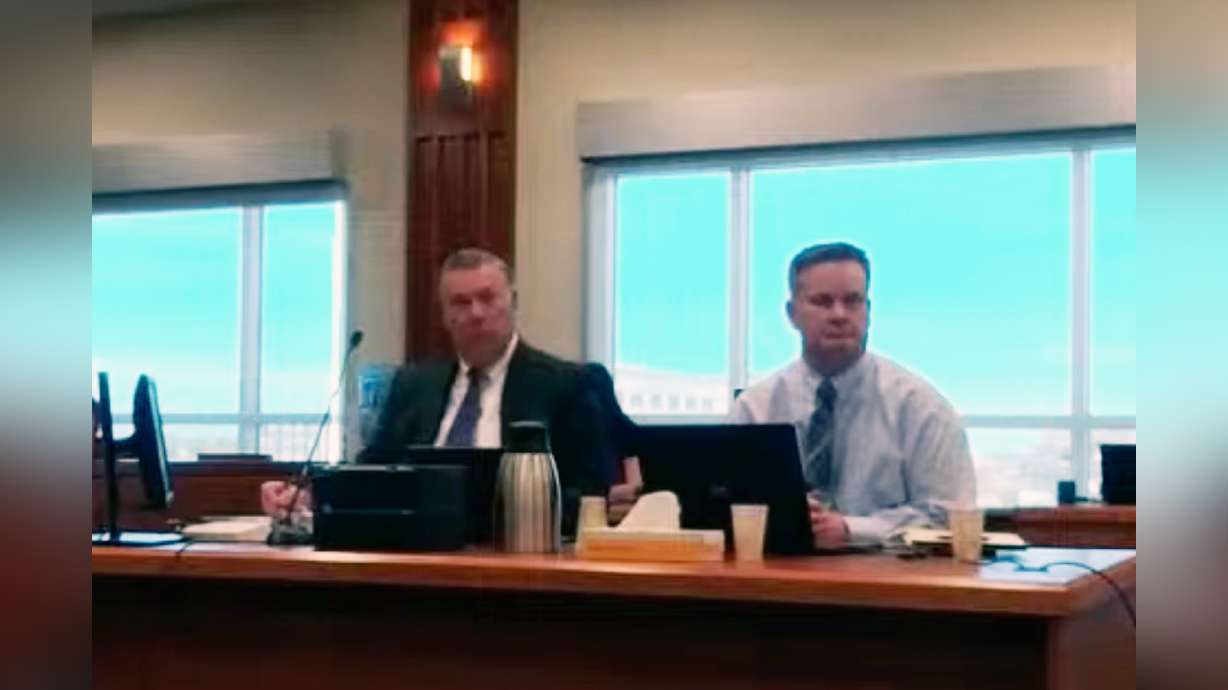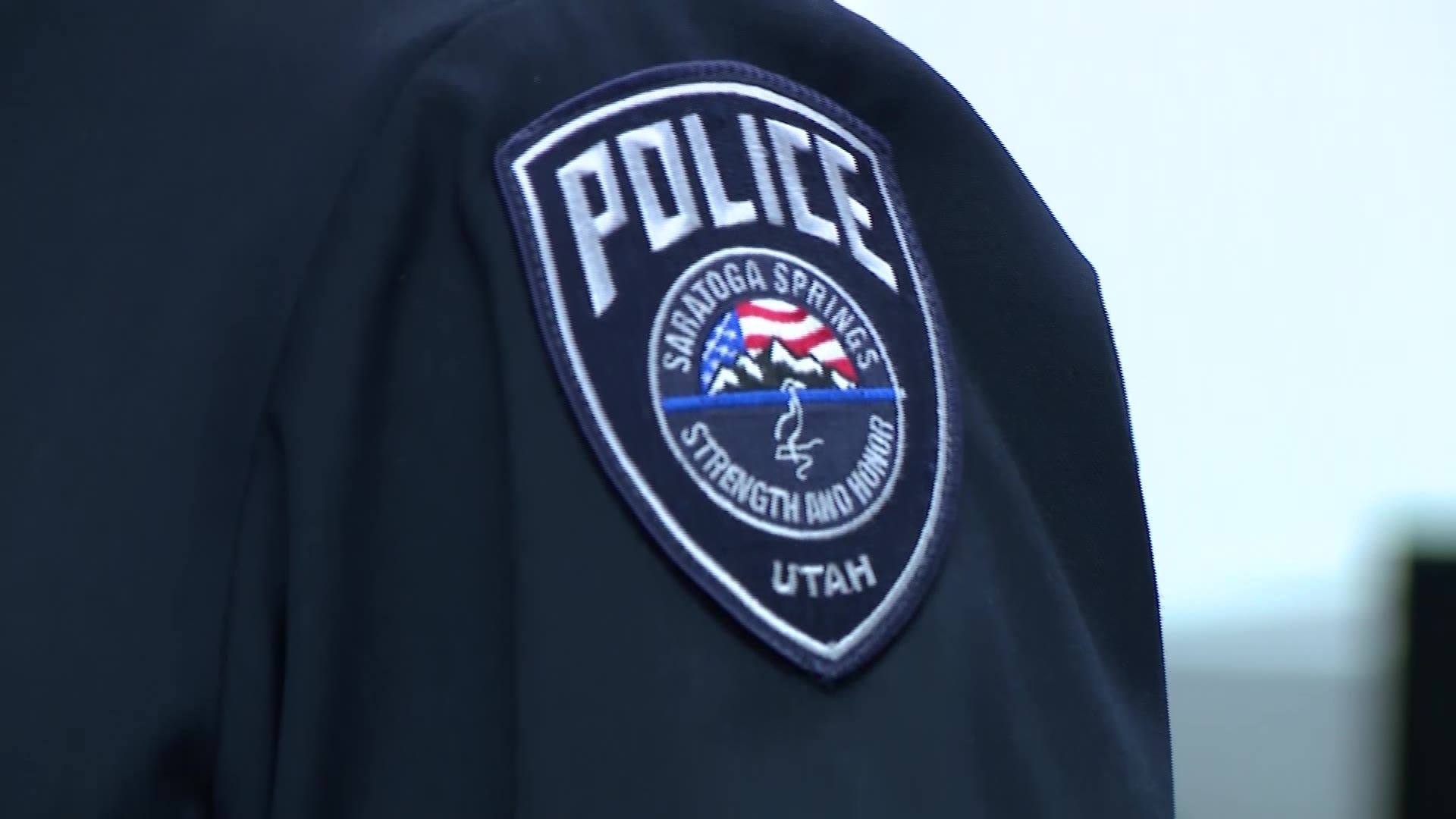Utah’s 2022 summer was relatively smoke-free, but record heat is hurting air-quality
Aug 30, 2022, 6:35 PM | Updated: May 21, 2023, 4:38 pm

Birds eye view of Salt Lake City on May, 2022.
SALT LAKE CITY — This summer, Utah has experienced a lot less smoke pollution than last summer. Even though numerous heat records have been broken this summer, Utah air has been relatively smoke-free.
Around this time last year, many of our communities suffered through some of the worst smoke pollutions they’ve ever seen.
This year, fewer days have been impacted by particulate pollution from wildfire smoke. But, ozone pollution is reaching unhealthy levels during the peak heating of the day this week.
“Over the past five years, we have seen unprecedented wildfire activity. So, we’ve seen a lot of wildfires here in Utah but also regionally,” said Derek Mallia, a research assistant professor in the department of atmospheric science at the University of Utah. His research is focused on the impacts of wildfires on air quality in Utah.
He calls the last two fire seasons a couple of the worst ever and last year one of the smokiest. California wildfires are a big reason.
“They’ve had some record-breaking years in the past, and of course, we’re downwind from California. So, if they get smoke, we ultimately get smoke,” Mallia explained.
Smoke From Western Wildfires Rolls Into Utah, Dropping Air Quality To Unhealthy Levels
Smoke forecast maps show smoke wafting out of California, not creating too much trouble for Utah. The monsoon, nearly nonexistent in the last couple of years, has also kept the flowing smoke out of Utah.
“The biggest thing that is playing a role, though, is that we just haven’t had big fires,” Mallia said.
Data from the Utah Division of Air Quality shows more than 40 days last summer exceeded healthy air quality standards for pollution. This summer, that number is fewer than 15, and most of those bad air days were impacted by ozone pollution, not wildfire smoke.
“The weather patterns that were predominant last year really funneled the smoke from California and Oregon wildfires right into our area,” said Bryce Bird, air quality director with the Utah Department of Environmental Quality.
Utah has been fortunate to dodge large wildfires, which cause the most pollution in nearby communities. But, the state air quality director points out wildfire season is not over, and the hot weather today and in the days ahead cooks up the ozone.
“It really is a strong irritant to your lungs,” Bird said. “So, it triggers asthma attacks and things like that.“
Ozone levels are unhealthy right now along the Wasatch Front and will likely get there in the afternoons in the coming days. Ozone forms when heat and sunlight react with the emissions from our tailpipes and other volatile compounds.
During the peak heating of the day, avoid exertion, and try to reduce emissions from vehicles for cleaner air.
“Do whatever we can to reduce our individual contribution. The easiest way to do that is to reduce driving,” The air quality director said.
Download the UtahAir app to get real-time readings in your area for ozone and particulate pollution from wildfire smoke.














